Double eyelid surgery, or blepharoplasty, has become a popular option for many people seeking to enhance their appearance. Whether it’s to create a more defined crease in the eyelid or simply to achieve a fresh, more open-eyed look, this procedure is a common choice, especially in East Asia.
This popular cosmetic procedure can make your eyes appear bigger and more defined, but the process and results vary based on individual needs and expectations
What Is Double Eyelid Surgery?
Double eyelid surgery, also known as blepharoplasty, is a cosmetic procedure designed to create a crease in the upper eyelid. Some people naturally have a defined crease (commonly called “double eyelids”), while others do not. This surgery is typically sought after by individuals who either do not have a natural eyelid crease or who want to enhance the existing one.
Unlike other cosmetic procedures, double eyelid surgery has a specific cultural significance. In East Asian countries, it is one of the most common surgeries, as many individuals in this region naturally have a monolid (a single eyelid without a crease). For some, the procedure is a way to achieve a desired aesthetic that aligns with personal or cultural preferences.
Why Choose Taiwan for Double Eyelid Surgery?
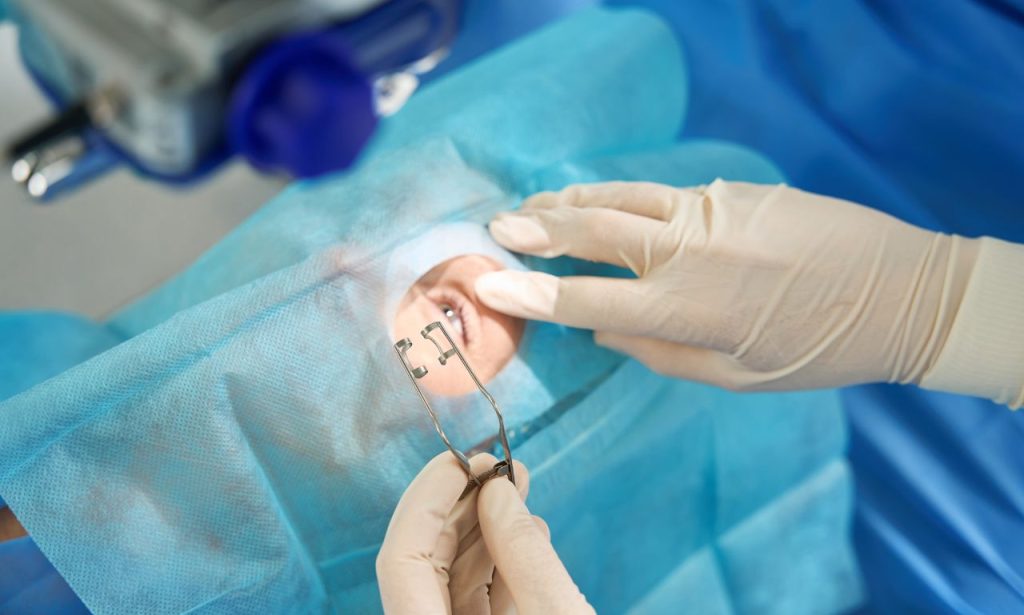
Taiwan has emerged as a key destination for double eyelid surgery due to its blend of skilled surgeons, modern medical facilities, and cost-effective options. The country’s cosmetic surgeons are known for their attention to detail and patient-centered approach, ensuring results that align with your natural features.
But there’s more to it than just skilled hands. Taiwan’s regulations ensure high standards of safety and care, and many clinics offer consultations in English, making the process more accessible for international patients.
Ever caught yourself pondering over double eyelid surgery? You’re not alone. This procedure has become a hot topic, sparking discussions from beauty salons to online forums.
Benefits of Double Eyelid Surgery
So, what’s all the buzz about? Let’s dive deep into the myriad benefits that double eyelid surgery brings to the table.
Enhanced Aesthetic Appeal
Ever feel like your eyes don’t quite reflect your inner sparkle? Double eyelid surgery, also known as eyelid crease surgery, can change that. By creating a defined eyelid fold, your eyes can appear larger, brighter, and more expressive. It’s not about conforming to societal beauty standards but about embracing a version of yourself that feels authentic.
Think about the ease of applying makeup post-surgery. With a well-defined crease, eyeshadows blend seamlessly, and eyeliner glides on effortlessly. No more struggling to create the illusion of depth or fighting against monolid challenges. Your morning routine just got a whole lot smoother.
Moreover, this procedure can bring balance to your facial features. If you feel that your eyes are overshadowed by other features, creating a double eyelid can harmonize your overall appearance. It’s a subtle change that can make a significant difference in how you perceive yourself.
Increased Eyelash Visibility
Are your eyelashes playing hide and seek? Double eyelid surgery can help bring them to the forefront. By adjusting the eyelid fold, your lashes may naturally lift upwards, giving them that coveted curl without the need for an eyelash curler.
This not only enhances the appearance of your lashes but can also prevent issues like lashes irritating the eye. Imagine batting your lashes with confidence, knowing they’re adding to your allure. Plus, with increased visibility, mascara application becomes a breeze, and the results are more dramatic.
Youthful Appearance
Eyes are often the first feature to show signs of aging. Sagging skin, droopy lids, and puffiness can add years to your face. Double eyelid surgery can combat these signs by removing excess skin and tightening the eyelid area.
It’s not about reversing time but rather ensuring your outer appearance matches how youthful you feel inside. Many who undergo the procedure report looking more rested and vibrant. It’s like getting a mini eye-lift, rejuvenating your appearance without drastic changes.
Preservation of Ethnic Identity
Let’s address the elephant in the room. There’s a misconception that double eyelid surgery aims to Westernize Asian features. In reality, it’s about enhancing one’s natural beauty while respecting ethnic characteristics.
Surgeons skilled in Asian blepharoplasty understand the delicate balance between creating a desirable crease and maintaining the uniqueness of each individual’s features. The goal isn’t to erase identity but to empower individuals to make choices that align with their personal aesthetic desires.
Choosing to undergo eyelid crease surgery is a personal decision, rooted in how you wish to present yourself to the world. It’s about self-expression and confidence, not about conforming to external pressures.
Types of Double Eyelid Surgery
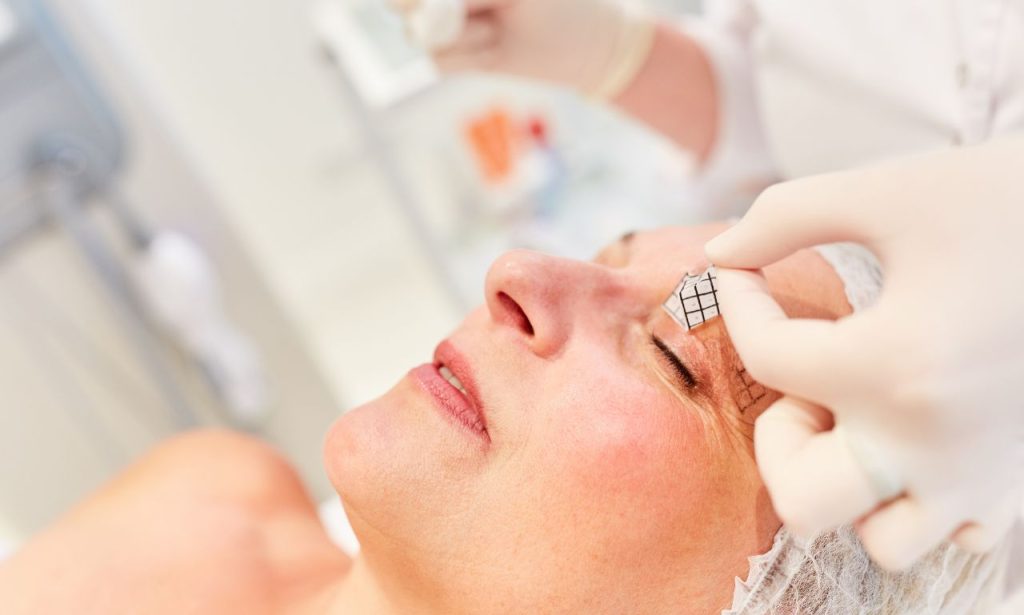
Not all double eyelid surgeries are created equal. Understanding the different techniques can help you make an informed decision.
Incisional Technique
The incisional method is the traditional approach, offering permanent results. It involves making a precise incision along the marked crease line, removing excess skin, muscle, and sometimes fat. This method is ideal for individuals with thicker eyelids, excess skin, or those seeking long-lasting effects.
Here’s how it works: After marking the desired crease, the surgeon delicately cuts along this line. Excess tissues are removed, and the incision is carefully closed, creating a new eyelid fold. The procedure typically lasts between one to two hours, depending on the complexity.
Benefits:
- Permanent Results: Provides lasting changes.
- Comprehensive Correction: Addresses excess skin and fat.
- Customizable: Tailored to individual anatomy and preferences.
Considerations:
- Longer Recovery: Takes more time to heal.
- Potential Scarring: Though usually minimal and well-hidden.
- Higher Initial Cost: May be more expensive due to complexity.
Non-Incisional Technique
For those who shudder at the thought of scalpels, the non-incisional or suture method offers an alternative. This technique involves creating the eyelid crease by placing sutures through small punctures in the skin, without cutting.
Ideal for individuals with thin eyelids and minimal excess skin, this method boasts shorter surgery and recovery times. The procedure involves passing sutures through strategic points in the eyelid to create a fold when the eye opens.
Benefits:
- Minimal Invasiveness: No cutting, leading to less trauma.
- Quick Recovery: Faster healing process.
- Reduced Scarring: Virtually no visible scars.
Considerations:
- Less Permanent: Sutures may loosen over time.
- Limited Correction: Not suitable for excess skin removal.
- Possible Revisions: May require touch-ups in the future.
Candidate Evaluation
Wondering if you’re a good fit for double eyelid surgery? Let’s delve into what makes an ideal candidate.
Preoperative Assessments
Before anything else, a thorough preoperative assessment is crucial. During your consultation, the surgeon will evaluate:
- Medical History: Disclose any medical conditions, allergies, or previous surgeries. Conditions like dry eye syndrome or thyroid eye disease can influence the surgical approach.
- Eye Anatomy: The surgeon will examine your eyelid thickness, fat distribution, and skin elasticity. These factors determine the most suitable technique.
- Lifestyle Factors: Smoking, alcohol consumption, and medication use can impact healing. It’s essential to be transparent to ensure optimal recovery.
This assessment isn’t just a formality. It’s a blueprint for a personalized surgical plan tailored to your unique needs.
Factors Influencing Surgical Approach
Several factors can sway the decision between the incisional and non-incisional methods:
- Age: Younger patients with good skin elasticity may benefit more from the non-incisional technique.
- Eyelid Thickness: Thick eyelids with excess fat often require the incisional method for lasting results.
- Desired Permanence: If you seek permanent results and are okay with a longer recovery, the incisional method might be preferable.
- Tolerance for Scarring: While incisional scars are typically minimal and concealed, if scarring is a significant concern, the non-incisional approach reduces this risk.
Your surgeon will discuss these aspects in detail, ensuring you feel confident in the chosen path.
The Surgical Procedure
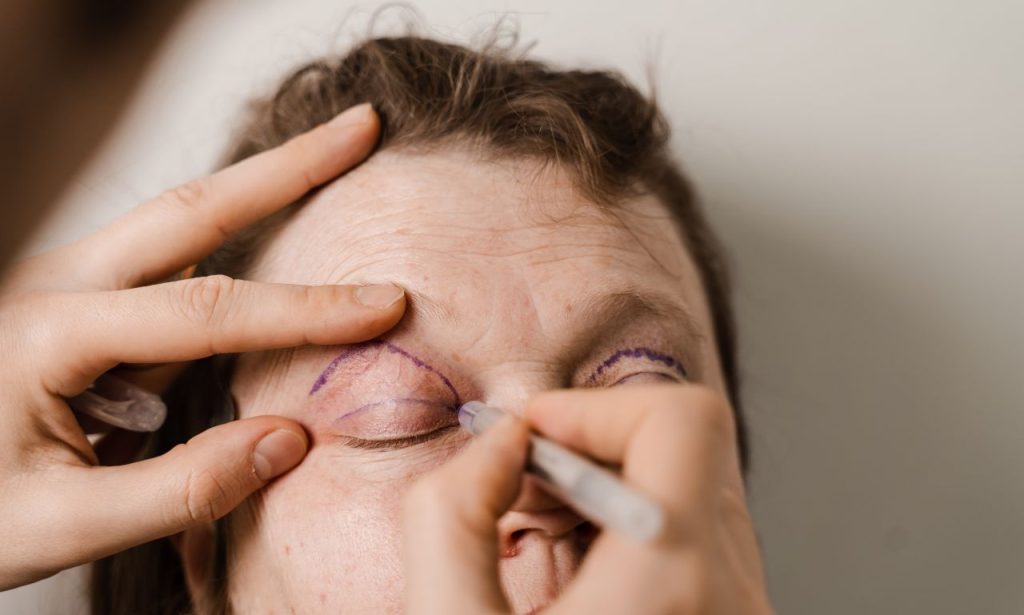
Curious about the nitty-gritty of the surgery itself? Let’s walk through what you can expect on the day.
Overview of the Surgery Steps
- Preoperative Preparation: Upon arrival, you’ll review the surgical plan with your surgeon. They’ll mark your eyelids with precision, outlining where incisions or sutures will be placed.
- Anesthesia Administration: You’ll receive anesthesia to ensure comfort throughout the procedure.
- Surgical Execution:
- Incisional Method: The surgeon makes an incision along the marked line, removes excess tissues, and carefully closes the incision to create the new crease.
- Non-Incisional Method: The surgeon passes sutures through the eyelid at strategic points, securing them to create a fold when the eye opens.
- Postoperative Care: Once the procedure is complete, you’ll be monitored briefly before being discharged. You’ll receive detailed care instructions to support healing.
Anesthesia Options
Anesthesia is a crucial component, ensuring a pain-free experience. The options include:
- Local Anesthesia with Sedation: Numbs the eyelid area while sedation helps you relax. You’ll be awake but won’t feel discomfort.
- General Anesthesia: Induces sleep throughout the procedure. It’s less common for double eyelid surgery unless combined with other surgeries or at your request.
Your surgeon will recommend the best option based on the procedure’s complexity and your comfort level.
Recovery After Double Eyelid Surgery
Post-surgery care is as important as the procedure itself. Let’s explore how to navigate the recovery phase.
Managing Swelling and Bruising
Swelling and bruising are part and parcel of eyelid surgery recovery. Here are some tips to manage them:
- Cold Compresses: Applying ice packs intermittently during the first 48 hours can reduce swelling.
- Head Elevation: Keep your head elevated, even while sleeping. Propping up with extra pillows can help.
- Avoid Straining: Activities that increase blood flow to the eyes, like heavy lifting or vigorous exercise, should be avoided initially.
- Gentle Cleansing: Follow your surgeon’s instructions on cleaning the incision sites. Keeping the area clean reduces infection risks.
Patience is key. Swelling peaks around the second day and gradually subsides over the next couple of weeks.
Timeline for Recovery
Here’s a general timeline to give you an idea:
- Day 1-2: Swelling and bruising are most noticeable.
- Day 3-7: Stitches (if any) are typically removed around day five.
- Week 2: Most swelling and bruising have diminished. You may feel comfortable returning to work and social activities.
- Week 4-6: The eyelids continue to heal, and the new crease settles.
- Month 3-6: Final results are evident. Any residual swelling has usually resolved.
Remember, everyone’s healing journey is unique. Adhering to postoperative instructions accelerates recovery.
Potential Risks and Complications
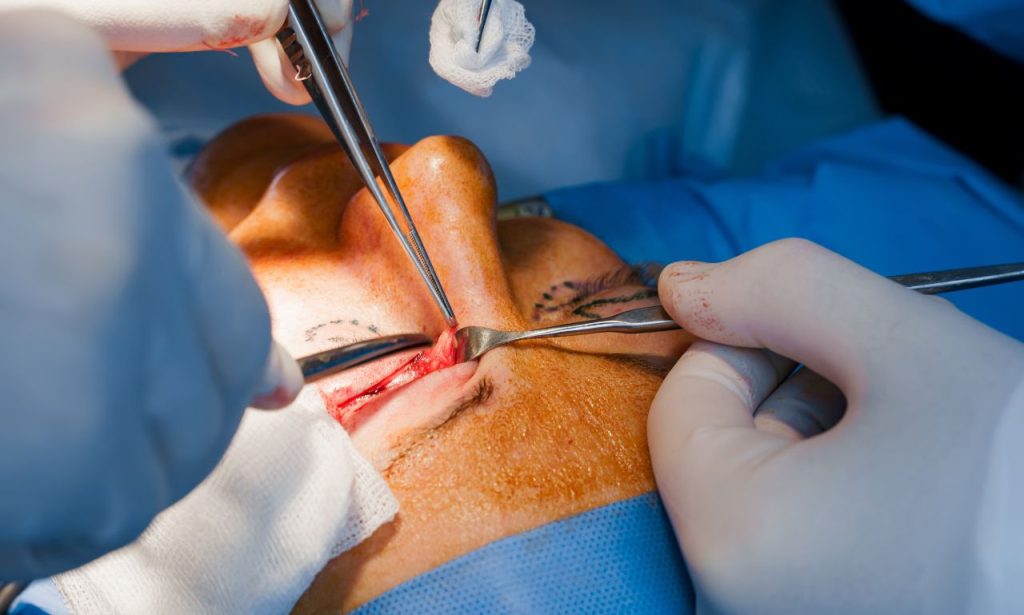
Every surgical procedure carries risks. Being aware empowers you to make informed decisions.
Scarring
While scarring is an inherent risk with the incisional method, surgeons take great care to minimize it. Incisions are strategically placed within natural eyelid folds, rendering scars virtually invisible once healed. Using prescribed scar creams and protecting the area from sun exposure can further reduce scarring.
Asymmetry
Minor asymmetry is natural, even in untouched faces. Post-surgery, slight differences may be noticeable due to swelling. Typically, as healing progresses, the eyelids become more symmetrical. Significant asymmetry, though rare, may require revision surgery.
Fold Failure
Particularly with the non-incisional technique, there’s a chance the created fold may loosen over time. Factors like eyelid rubbing, heavy eyelid tissues, or natural aging can contribute. Discussing these possibilities with your surgeon helps set realistic expectations.
Other Risks
- Infection: Rare but possible. Following aftercare instructions minimizes this risk.
- Dry Eyes: Temporary dryness may occur. Lubricating eye drops can provide relief.
- Bleeding or Hematoma: Accumulation of blood under the skin may require medical attention.
Open communication with your surgeon about any concerns or unusual symptoms is vital for prompt management.
Importance of Comprehensive Consultations
Preparation is the cornerstone of surgical success. Let’s explore why consultations are indispensable.
Discussing Costs
Understanding the financial aspect is crucial. Double eyelid surgery costs vary based on:
- Surgeon’s Expertise: Highly experienced surgeons may charge more.
- Geographic Location: Metropolitan areas often have higher fees.
- Facility Fees: Operating room and anesthesia costs.
- Postoperative Care: Follow-up visits and potential medications.
Ask for a detailed breakdown to avoid surprises. Also, inquire about payment plans or financing options if needed.
Setting Expectations for Results
Aligning your expectations with realistic outcomes is essential. During consultations:
- Share Your Goals: Be specific about what you hope to achieve.
- Review Before-and-After Photos: This provides insight into the surgeon’s work and potential results.
- Ask Questions: No query is too small. Understanding the procedure helps alleviate anxiety.
Remember, the goal is enhancement, not perfection. Embracing this mindset leads to greater satisfaction.
Longevity of Surgical Outcomes
Double eyelid surgery offers lasting results, but it’s not immune to the effects of aging. Over time, skin loses elasticity, and changes may occur. While the incisional method provides permanent structural changes, periodic touch-ups might be considered to maintain desired aesthetics.
Discussing the long-term care plan with your surgeon ensures you’re prepared for future possibilities.
Empowered with knowledge and ready to take the next step? Schedule a consultation with a trusted surgeon to explore if double eyelid surgery aligns with your vision.
How Much Does Double Eyelid Surgery in Taiwan Cost?
One of the main reasons people choose Taiwan for double eyelid surgery is the affordability. While prices vary depending on the clinic, the method used, and the surgeon’s experience, you can expect to pay anywhere between $1,500 to $3,500 for the procedure.
This price usually includes the surgery, anesthesia, and follow-up visits. Keep in mind that additional expenses may include pre-operative consultations, medications, and travel costs if you’re coming from abroad.
Despite the lower costs, Taiwan’s healthcare system ensures high standards, and many surgeons have international training, making it a great balance between quality and affordability.
Choosing the Right Clinic in Taiwan
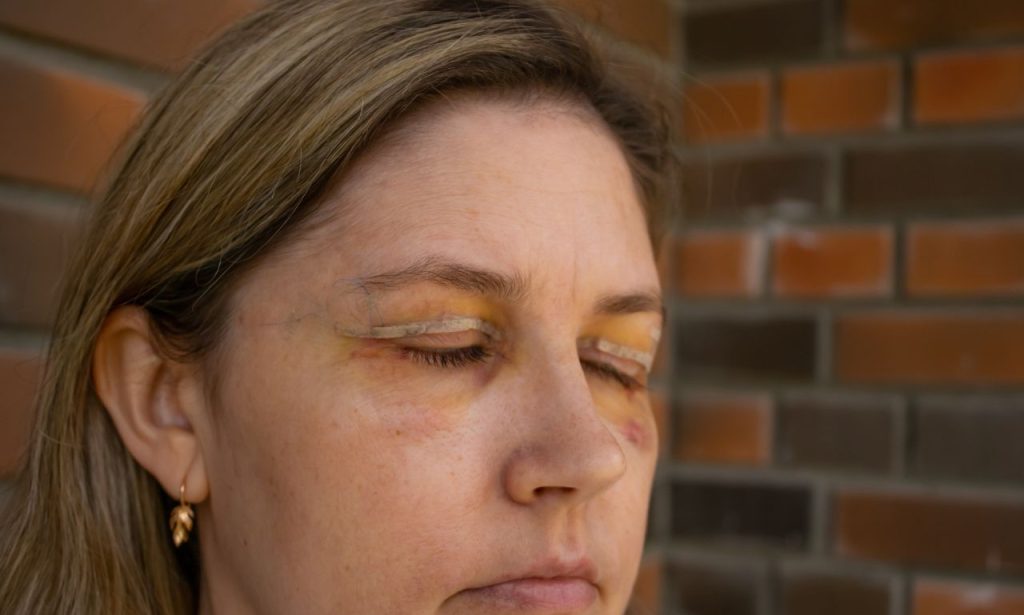
When choosing a clinic for your double eyelid surgery, take the time to do thorough research. Here are some tips for finding the right fit:
- Reputation: Look for clinics with strong reviews and testimonials from previous patients. Many clinics in Taiwan offer before-and-after photo galleries, which can give you a better idea of their work.
- Consultation Process: A good clinic will take the time to understand your needs, explain the procedure in detail, and set realistic expectations.
- Language Accessibility: If you’re an international patient, choose a clinic that offers services in English or your preferred language. This will ensure smooth communication throughout the process.
- Post-Operative Care: Ask about follow-up visits and aftercare. A clinic that prioritizes your recovery is crucial to achieving the best results.
Is Double Eyelid Surgery Right for You?
Choosing to undergo double eyelid surgery is a deeply personal decision. It’s essential to do your research, consult with a qualified surgeon, and set realistic expectations for the results. The procedure can be life-changing for many, offering an enhanced appearance and a boost in confidence. But it’s also important to weigh the pros and cons carefully.
Before making any decisions, ask yourself what your goals are and why you want the surgery. Are you doing it for yourself, or are you feeling external pressures? Ensuring that you’re doing it for the right reasons will make the experience far more rewarding.
Final Thoughts
Double eyelid surgery can provide subtle yet significant changes to your appearance, enhancing your eyes and giving you a fresh, defined look. Whether you’re seeking aesthetic improvement or practical benefits like easier makeup application or correcting droopy lids, the choice is entirely yours.
Take the time to consult with a reputable surgeon, weigh the options between the non-incisional and incisional methods, and prepare for the recovery process. If double eyelid surgery feels like the right step for you, it might just be the boost you’ve been looking for to feel more confident in your appearance.
ALSO READ: Fall Skincare Routine for a Glowing Skin
FAQs
You should avoid wearing contact lenses for at least two weeks post-surgery or until your surgeon gives the all-clear. Glasses are a safer alternative during the initial healing phase.
Light activities can typically resume after a week, but swimming, heavy lifting, and strenuous exercise should be avoided for at least two to three weeks to prevent complications.
With the incisional method, stitches are placed along the eyelid crease and are usually removed after five to seven days. They may be slightly visible but are typically small and discreet.
Discomfort is generally minimal. Anesthesia prevents pain during the procedure, and any postoperative discomfort can often be managed with over-the-counter pain relievers as advised by your surgeon.




